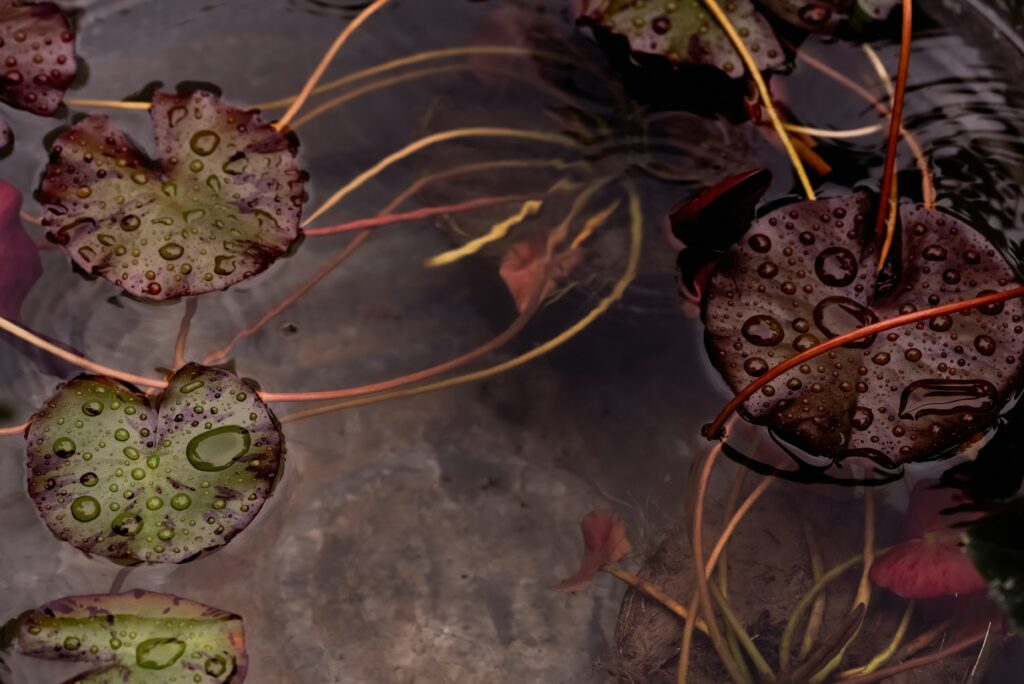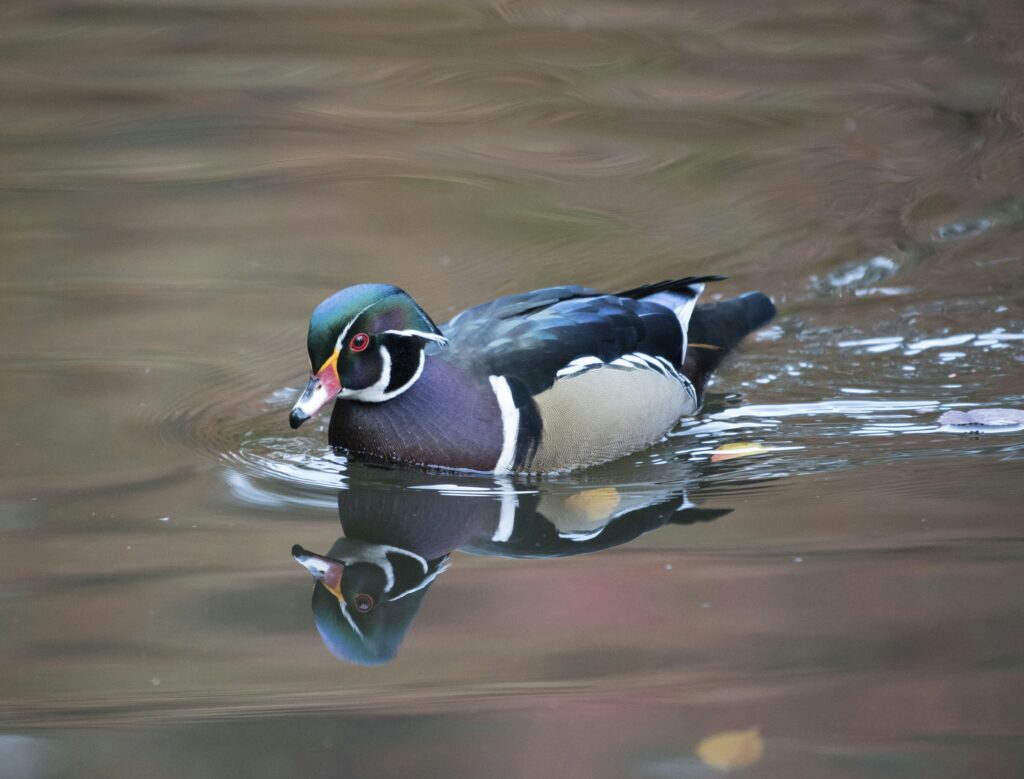Are you thinking about adding fish to your pond? Today we will guide you on how do you prepare a pond for fish, and hopefully give you enough information so you can create a perfect habitat for your future aquatic friends. From selecting the right location to managing the water quality, we will walk you through the essential steps to ensure your pond is ready for its newest residents.
So, grab your fishing net, and let’s get started!

1. Choosing the Right Pond
When preparing a pond for fish, it is essential to choose the right pond based on its size, depth, water source, and sunlight exposure.
Determining the Size and Depth
The size and depth of the pond are crucial factors to consider when preparing it for fish. The pond should be large enough to accommodate the desired number of fish comfortably. A deeper pond will provide a more stable environment for the fish, especially during extreme weather conditions. It is recommended to have a pond depth of at least 3 feet to ensure the fish have enough space to thrive.
Checking the Water Source
The source of water for the pond plays a vital role in ensuring the well-being of the fish. It is important to use a clean and reliable water source, such as a municipal water supply or a properly filtered well. Avoid using water sources that may contain harmful chemicals or pollutants, as they can have a detrimental effect on the fish.
Assessing Sunlight and Shade
Sunlight and shade are crucial factors in maintaining a balanced ecosystem in the pond. Fish require a certain amount of sunlight for their well-being, as it promotes the growth of aquatic plants that provide oxygen and food. However, excessive sunlight can lead to the growth of algae, which may harm the fish. It is important to assess the amount of sunlight and shade the pond receives throughout the day and make necessary adjustments, such as adding shade structures or aquatic plants to regulate the sunlight exposure.
2. Installing Pond Equipment
Installing the right pond equipment is essential for maintaining a healthy and thriving fish pond. Proper equipment such as a pond filter, pond pump, and pond aeration system are necessary to keep the water clean and well-oxygenated.
Selecting a Pond Filter
Choosing the right pond filter is crucial for maintaining water clarity and removing debris from the pond. There are various types of pond filters available, including biological, mechanical, and UV filters. It is important to consider the size of the pond, the number of fish, and the desired level of filtration when selecting a pond filter.
Installing a Pond Pump
A pond pump is necessary to circulate and oxygenate the water in the pond. It helps to prevent stagnant water and creates a conducive environment for the fish. When installing a pond pump, consider factors such as the size of the pond, the desired flow rate, and the energy efficiency of the pump.
Considering Pond Aeration
Pond aeration plays a vital role in maintaining the oxygen levels in the water. It helps prevent oxygen depletion, which can be harmful to the fish and other aquatic life. Various pond aerators, such as diffused aeration systems or floating fountains, can be used to introduce oxygen into the water. Consider the size of the pond and the oxygen requirements of the fish when selecting a pond aeration system.
3. Preparing the Pond Lining
Proper preparation of the pond lining is essential for preventing water leakage and ensuring the longevity of the pond.
Cleaning the Pond Surface
Before adding the pond liner, it is important to clean the pond surface thoroughly. Remove any debris, rocks, or vegetation that may puncture or damage the liner. Ensure that the surface is smooth and free from any sharp objects that could cause leaks.
Adding a Pond Liner
A pond liner is a crucial component in preventing water leakage and maintaining the water levels in the pond. There are various types of pond liners available, such as rubber or PVC liners. Choose a durable and high-quality liner that is suitable for the size and shape of the pond. Carefully lay the liner in the pond, ensuring it covers the entire surface area and extends up the sides.
Securing the Liner
To secure the pond liner, use rocks, bricks, or other sturdy materials around the edges. This will help anchor the liner in place and prevent it from shifting or tearing. Ensure that the liner is stretched properly to avoid any folds or creases that may collect debris or create weak spots.
4. Balancing Water Quality
Maintaining proper water quality is crucial for the health and well-being of the fish in the pond. Regular testing and monitoring of pH levels, ammonia and nitrite levels, and addressing algae growth are essential for creating a balanced aquatic environment.
Testing the pH Levels
pH levels determine the acidity or alkalinity of the water. Fish require a specific pH range for optimal health and growth. Regularly test the pH levels using a water testing kit and make necessary adjustments using pH adjusting products, if needed.
Monitoring Ammonia and Nitrite
Ammonia and nitrite are harmful to fish and can cause serious health issues if their levels are too high. Regularly test the water for ammonia and nitrite using a water testing kit. If elevated levels are detected, take immediate action by adding a biological filter or adjusting the fish feeding to reduce waste.
Addressing Algae Growth
Algae growth is a common issue in fish ponds and can affect water quality and fish health. Controlling algae growth can be achieved by maintaining a proper balance of nutrients in the water, regularly cleaning the pond, and introducing appropriate algae control products or aquatic plants to outcompete the algae for nutrients.

5. Introducing Beneficial Bacteria
Beneficial bacteria play a vital role in maintaining a healthy pond ecosystem. These bacteria help break down organic waste, such as fish waste and decaying plants, into less harmful substances, promoting water clarity and reducing the risk of disease.
Understanding the Role of Bacteria
Beneficial bacteria, also known as nitrifying bacteria, convert harmful ammonia and nitrite into less toxic nitrate through a process called nitrification. They also help break down organic matter, preventing the accumulation of waste products in the pond.
Choosing Appropriate Bacteria Products
There are various bacteria products available specifically designed for pond use. Choose a high-quality bacteria product that contains the appropriate strains of beneficial bacteria. Consider factors such as the size of the pond, the number of fish, and the specific needs of the ecosystem when selecting a bacteria product.
Adding Bacteria to the Pond
Introduce the beneficial bacteria into the pond according to the manufacturer’s instructions. Bacteria products are typically available in liquid or granular form. Distribute the bacteria evenly throughout the pond, focusing on areas with higher organic waste accumulation, such as the bottom or near the pond filter.
6. Acclimating the Pond Water
Acclimating the pond water is an important step in preparing a suitable environment for the fish. This involves allowing the water to settle, gradually adjusting the water temperature, and monitoring water chemistry.
Allowing the Pond Water to Settle
After filling the pond, it is important to allow the water to settle before introducing the fish. This allows any sediment or cloudiness caused by the addition of water and disturbance of the pond lining to settle at the bottom. Patience is key during this process, and it is recommended to wait at least 24 to 48 hours before proceeding to the next step.
Gradually Adjusting Water Temperature
If the water source used to fill the pond has a different temperature than the desired temperature for the fish, it is important to gradually adjust the water temperature to avoid shocking the fish. This can be done by adding small amounts of water with the desired temperature to the pond over a period of several days until the water reaches the desired temperature.
Monitoring Water Chemistry
During the acclimation process, it is crucial to monitor the water chemistry regularly. Test the water for pH levels, ammonia, nitrite, and nitrate to ensure they are within the appropriate range for the fish species. If any imbalances are detected, take necessary actions to rectify them before introducing the fish.

7. Adding Aquatic Plants
Introducing aquatic plants to the pond is beneficial for both the fish and the overall ecosystem. They provide shade, oxygenation, and natural filtration, creating a balanced and healthy environment for the fish.
Selecting Suitable Pond Plants
When choosing aquatic plants for the pond, consider factors such as sunlight requirements, water depth, and the specific needs of the fish. Floating plants, such as water lilies or duckweed, provide shade and oxygenation, while submerged plants, such as Anacharis or Hornwort, help oxygenate the water and provide hiding places for the fish.
Creating a Balanced Ecosystem
Aquatic plants play a crucial role in creating a balanced ecosystem in the pond. They help absorb excess nutrients, reduce algae growth, and provide habitat and food sources for the fish. Properly selecting and positioning the plants will contribute to the overall health and well-being of the fish.
Planting and Positioning the Plants
Follow the specific planting guidelines for each type of aquatic plant. Some plants may require planting in pots or baskets, while others can be directly planted in the substrate. Position the plants strategically throughout the pond, considering the sunlight requirements and the desired aesthetic appeal. Ensure that the plants are securely anchored to prevent them from floating or being uprooted by fish.

8. Introducing Fish to the Pond
Introducing fish to the pond is an exciting step in the preparation process. It is important to carefully select compatible fish species, transport them safely, and release them gradually into their new environment.
Choosing Compatible Fish Species
When selecting fish species for the pond, consider their compatibility with the water conditions, pond size, and other inhabitants. Some fish may have specific temperature or pH requirements, while others may be more aggressive or territorial. Research the characteristics and requirements of different fish species before making a decision.
Carefully Transporting the Fish
Transporting fish can be stressful for them, so it is essential to minimize the stress and ensure their safety during the process. Use appropriate fish transport bags or containers and fill them with water from the pond to maintain a consistent water environment. Avoid overcrowding the bags and handle the fish with care to prevent injury.
Releasing the Fish in the Pond
Once the fish have been transported to the pond, it is important to release them gradually to allow them to acclimate to their new environment. Float the bags or containers in the pond for about 15 minutes to equalize the temperature, then gently release the fish into the pond. Avoid sudden movements or disturbances that may startle the fish.
9. Monitoring and Maintaining the Pond
Regular monitoring and maintenance of the pond are essential for the long-term health and well-being of the fish and the overall ecosystem.
Checking Water Parameters Regularly
Regularly test the water parameters, including pH levels, ammonia, nitrite, and nitrate, to ensure they remain within the appropriate range for the fish. Monitor the water temperature, oxygen levels, and clarity to identify any potential issues early on. Make necessary adjustments or seek professional advice if any imbalances or abnormalities are detected.
Cleaning and Pruning Plants
Regularly clean the pond to remove any debris or excess organic matter that may accumulate. This includes removing fallen leaves, dead plants, and uneaten fish food. Prune and trim aquatic plants as needed to maintain their health and prevent overcrowding. This will help maintain a clean and balanced ecosystem in the pond.
Preventing and Managing Fish Diseases
Fish diseases can pose a threat to the health of the pond ecosystem. Regularly observe the fish for any signs of illness, such as abnormal behavior, color changes, or physical lesions. If any fish show signs of disease, isolate them and seek professional advice for proper diagnosis and treatment. Proper nutrition, regular water changes, and maintaining a clean and well-balanced environment will help prevent the onset of diseases.

10. Troubleshooting Common Pond Issues
Occasionally, pond owners may encounter common issues that require prompt attention and resolution to maintain a healthy and thriving fish pond.
Addressing Water Leaks or Loss
Water leaks or loss can occur due to various reasons, such as punctures in the pond liner or malfunctioning equipment. Regularly inspect the pond for any signs of leaks, such as decreasing water levels or wet spots. Patch any punctures or tears in the pond liner promptly, and replace any faulty equipment to prevent further water loss.
Dealing with Excessive Nitrate Levels
High nitrate levels can be harmful to the fish and contribute to excessive algae growth. Regular water testing will help identify elevated nitrate levels. To address this issue, consider incorporating more aquatic plants in the pond to absorb excess nutrients, implement nitrogen-reducing filters, or perform partial water changes to lower nitrate levels.
Managing Predators and Pests
Predators and pests, such as birds, raccoons, or herons, may pose a threat to the fish in the pond. Install appropriate measures, such as mesh or netting, to deter these predators from accessing the pond. Regularly inspect the pond for signs of pest infestation and take necessary actions, such as using environmentally-friendly pest control methods, to manage the issue effectively.
How Do You Prepare A Pond For Fish
By following these comprehensive steps, pond owners can ensure that their pond is properly prepared for fish. From choosing the right pond to maintaining water quality and introducing aquatic life, each step contributes to creating a healthy and vibrant aquatic ecosystem for the enjoyment of both the fish and their caretakers. With regular monitoring and proper maintenance, the pond will provide a beautiful and thriving habitat for the fish to flourish.
If you require any further reading on this subject, we have a number of informational posts available, such as ‘What Is The Ideal Pond Ecosystem‘, which will be of great assistance to you.
